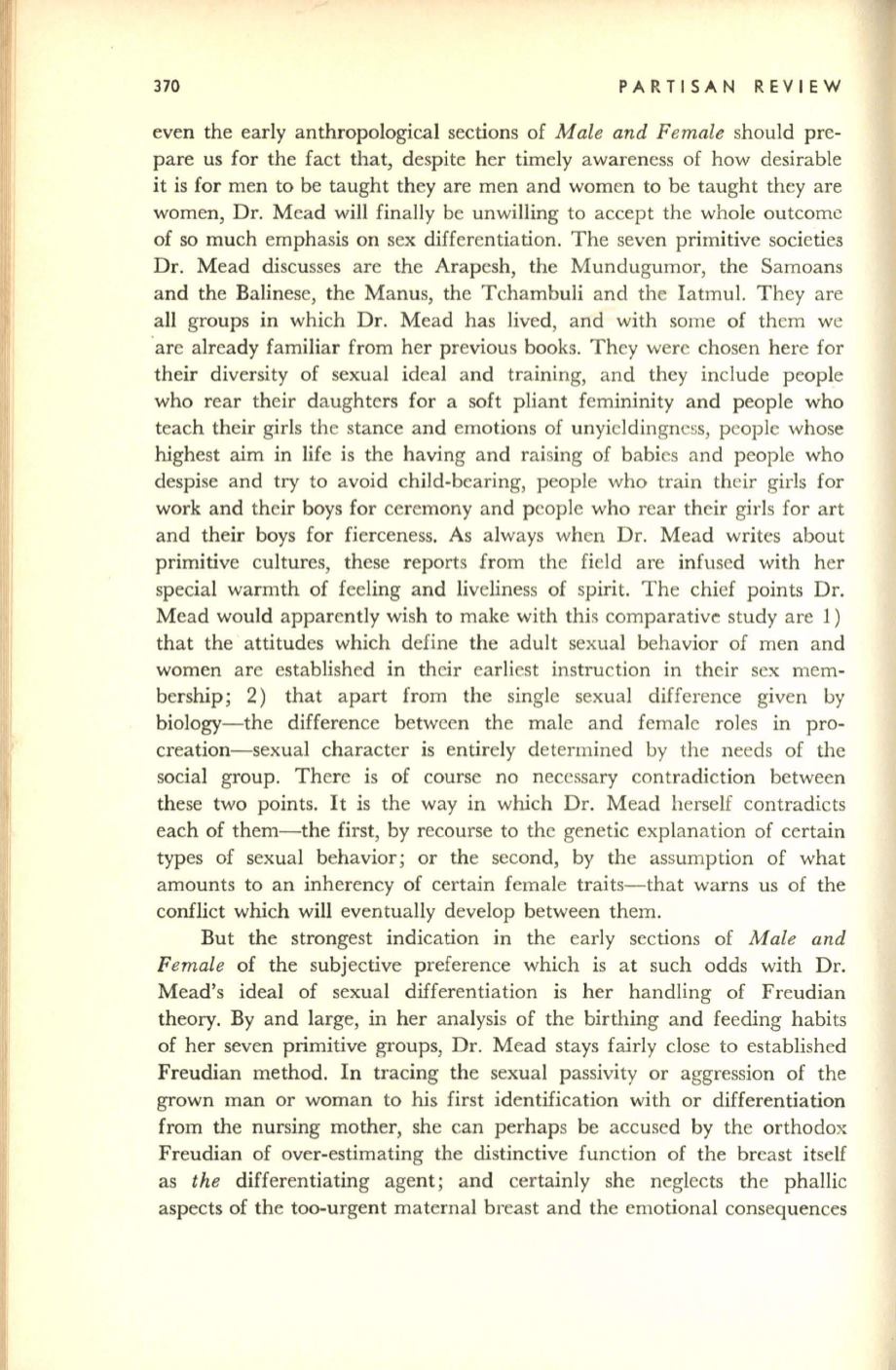
370
PARTISAN REVIEW
even the early anthropological sections of
Male and Female
should pre–
pare us for the fact that, despite her timely awareness of how desirable
it is for men to be taught they are men and women to be taught they are
women, Dr. Mead will finally be unwilling to accept the whole outcome
of so much emphasis on sex differentiation. The seven primitive societies
Dr. Mead discusses are the Arapesh, the Mundugumor, the Samoans
and the Balinese, the Manus, the Tchambuli and the Iatmul. They are
all groups in which Dr. Mead has lived, and with some of them we
'are already familiar from her previous books. They were chosen here for
their diversity of sexual ideal and training, and they include people
who rear their daughters for a soft pliant femininity and people who
teach their girls the stance and emotions of unyieldingness, people \V·hose
highest aim in life is the having and raising of babies and people who
despise and try to avoid child-bearing, people who train their girls for
work and their boys for ceremony and people who rear their girls for art
and their boys for fierceness. As always when Dr. Mead writes about
primitive cultures, these reports Jrom the field are infused with her
special warmth of feeling and liveliness of spirit. The chief points Dr.
Mead would apparently wish to make with this comparative study are 1)
that the attitudes which define the adult sexual behavior of men and
women are established in their earliest instruction in their sex mem–
bership; 2) that apart from the single sexual difference given by
biology-the difference between the male and female roles in pro–
creation-sexual character is entirely determined by the needs of the
social group. There is of course no necessary contradiction between
these two points. It is the way in which Dr. Mead herself contradicts
each of them-the first, by recourse to the genetic explanation of certain
types of sexual behavior; or the second, by the assumption of what
amounts to an inherency of certain female traits-that warns us of the
conflict which will eventually develop between them.
But the strongest indication in the early sections of
Male and
Female
of the subjective preference which is at such odds with Dr.
Mead's ideal of sexual differentiation is her handling of Freudian
theory. By and large, in her analysis of the birthing and feeding habits
of her seven primitive groups, Dr. Mead stays fairly close to established
Freudian method. In tracing the sexual passivity or aggression of the
grown man or woman to his first identification with or differentiation
from the nursing mother, she can perhaps be accused by the orthodox
Freudian of over-estimating the distinctive function of the breast itself
as
the
differentiating agent; and certainly she neglects the phallic
aspects of the too-urgent maternal breast and the emotional consequences


